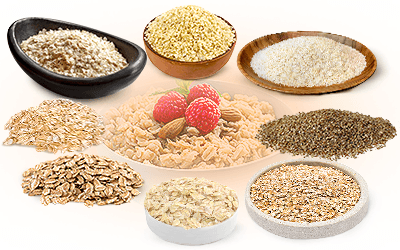As the name suggests, cornstarch is the starch (type of carbohydrate) extracted from corn, most specifically its endosperm. Thanks to its thickening ability, this white powder has multiple culinary uses, ranging from sauces and soups to breads and cakes.
Despite its popularity, cornstarch is not the best food to eat in large quantities. After all, it's highly processed, heavy in calories, and has very little nutritional value. Luckily, there are numerous cornstarch replacements available, some of which come with an added benefit of being quite nutritious.
Arrowroot Flour
Arrowroot is a starchy tuber native to tropical regions of South and Central Americas as well as the West Indies. Its starch is extracted from its rootstock, then dried and finely ground, creating a tasteless and versatile flour. It's gluten-free, less processed than cornstarch, and offers fiber and a handful of micronutrients. Also known as arrowroot powder or arrowroot starch, it can replace cornstarch in savory and sweet dishes alike (use 1/3 - ½ of the amount of cornstarch).
Arracacha Flour
Hailing from the South American Andes, arracacha is a starchy, parsnip-like root that's still little known in the Western world. It has a mild flavor, and it's particularly rich in resistant starch, a type of starch that has been linked to promoting gut health.1 Arracacha flour is obtained by cleansing, drying, and grinding the tubers, creating a mildly sweet, nutritious, and easily digestible cornstarch replacement. It's not only the perfect thickening agent, but is also a wholesome addition to gluten-free baked goods.
Rice Flour
Rice flour is another popular cornstarch alternative. It comes in two types: white and brown. White rice flour is flavorless and made by grinding white rice whose bran and germ have been removed. Brown rice flour, on the other hand, has a slightly sweet, nutty flavor, and it's made by grinding whole grain rice. Both flours can replace cornstarch in a variety of meals, including noodles, cookies, soups, stews, and more. Using two to three tablespoons of rice flour for every one tablespoon of cornstarch should work for most recipes.
Tapioca Flour
Tapioca is extracted from the cassava plant. It can be dehydrated and ground into flour. Due to the high energy content it provides, tapioca flour - also known as tapioca starch - is a nutritional staple on several continents, including South America, Africa, and Asia. It has a slightly sweet flavor and adds a chewy texture to baked goods. It is also great at thickening puddings, sauces, soups, and more. To use it as a cornstarch replacement, add two tablespoons of tapioca flour for every one tablespoon of cornstarch.
Potato Starch
The list of cornstarch replacements would not be complete without potatoes, mainly for its starch. To obtain a white, powdery potato starch, potatoes are first crushed to release milky, liquid starch, which is then washed and dried. The final potato flour has a neutral flavor and contains resistant starch. It can be substituted for cornstarch in a 1:1 ratio as a thickening agent in sauces, gravies, casseroles, and other meals. Keep in mind that extensive cooking times may reduce its thickening abilities.
Cornstarch alternatives are currently in high demand, especially by those who have corn allergies or avoid genetically modified foods, like corn. The good news is that nature provides numerous options that can satisfy all your cooking and baking needs. Once you give them a try, they will surely become your pantry staple!
Sources
- Central Washington University, Potato Starch is an Acceptable Substitute for Tapioca Flour in a Gluten-Free Yellow Cake
- Ciencia Rural, Physicochemical and technological characteristics of arrowroot flour modified by ultrasound and low-temperature heat treatment, 2019
- Foods - Open Access Journal, Assessing the Nutritional Value of Root and Tuber Crops from Bolivia and Peru, 2019
- Heliyon, Chemical, structural, and thermal characterization of starches from four yellow Arracacha (Arracacia xanthorriza) roots produced in Colombia, 2020
- Invasive Species Compendium, Arracacia xanthorrhiza (arracacha)
- Johns Hopkins Medicine, Nutritional Values of the Rhizome of Arrowroot
- United States Department of Agriculture, Cornstarch | Arrowroot Flour | Rice flour | Tapioca flour | Potato Starch
- Universities Research Journal, Nutritional Values of the Rhizome of Arrowroot
Footnotes:
- Advances in Nutrition. (2015). Role of Resistant Starch in Improving Gut Health, Adiposity, and Insulin Resistance. Retrieved June 28, 2023, from https://www.ncbi.nlm.nih.gov/pmc/articles/PMC4352178/








